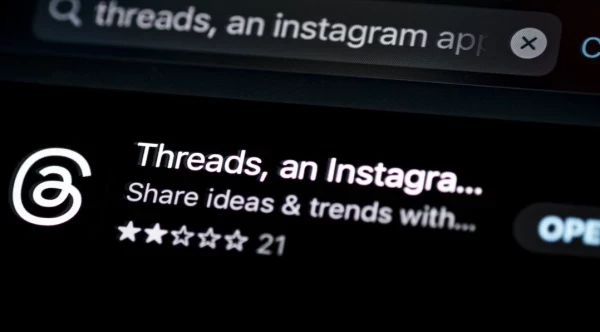Glossybox: The Customer Isn't Always Right
Add bookmarkYou’re told the customer is always right. You know that the customer is not literally always right. How do you account for those conflicting notions?
For Glossybox, which offers subscriptions to beauty products, the answer is simple: favor the latter notion.
Do not be afraid to stop pretending. Do not be afraid to admit the customer can actually be wrong.
At last week’s New Rules of Beauty Marketing and PR event in London, the company’s managing director of UK and Ireland Rachel Kavanagh acknowledged that the organization is committed to holding its ground against customers who voice “aggressive” and “abusive” complaints and comments within the network's online channels.
Instead of accepting false blame and offering hollow apologies to customers that are clearly wrong and/or out of line, Glossybox will ask the confrontational party to cancel their subscriptions.
According to Kavanagh, Glossybox sees itself as an authority. An authority must be confident in its position and thus equally confident in telling a customer “no, you’re not right.”
That does not mean the organization should needlessly dismiss customer concerns or stubbornly refuse to acknowledge its own mistakes. It does, however, mean that the organization can comfortably stand its ground when it knows the customer is wrong. It can comfortably set the parameters and tone of the experience it creates and defend that construct when it comes under fire.
“The customer isn’t always right,” added Kavanagh. “Brands are actually going to start saying 'no, you’re not right' to the customer. We have an authority, we know our position and we stand by it.”
On the surface, it may seem as if Kavanagh’s approach runs directly counter to the notion of customer centricity. Thought leadership in the “age of the empowered customer” tells the customer that he, not the brand, gets to dictate the terms of engagement. Brands are supposed to comply.
Kavanagh’s stance, however, raises an interesting question about what it means to be customer centric. Is customer centricity telling every conceivable customer exactly what they want to hear? Or is it instead a philosophy of creating the best possible experience for a brand’s target customers (or at least for the aggregate of customers)?
Glossybox views its customer base as a community. The abusive comments in question introduce negativity and customer care demands into a community that is meant to harbor neither.
Both serve to hurt the experience for the other customers, thus thwarting the growth of the community.
“We are fiercely protective of our community and we want to nurture it,” declared Kavanagh. “This is our channel so that fear has to stop because you can’t progress.
“You don’t do your business any favors and you don’t do your customers any favors when you allow that level of negativity to take off.”
Kavanagh’s comments are likely music to the ears of many customer service professionals who, in the name of “customer centricity,” allow abusive, negative comments to infiltrate their service communities and centers and consume their support resources. Her comments provide reassurance that it is okay to fire customers whose demands and/or behaviors run counter – and thus add unwanted to cost – to the core business vision.
On the other hand, some may feel as if her stance against aggressive customers is too aggressive. While anyone who ever dealt with a rude customer can certainly sympathize with her stance, some are likely averse to kissing those overbearing customers goodbye (or even telling them “no”). Such customers may be frustrating, but they do still represent existing and future revenue opportunities.
And even if there is no prayer of profitably retaining their business, rude, disgruntled customers may still be valuable from an insight standpoint.
Listening to seemingly misguided customers – and welcoming dissent into the discussion – may be challenging, but it is not always wrong. It is certainly not always without value.
Kavanagh also made an intriguing point regarding the aim of her company's social platform. The executive declared it “quite important” that the community does not become a “customer care platform.”
There, again, is merit to the approach. An abundance of customer care issues would certainly distract from the online environment's core purpose and thus certainly weaken the experience for other members. The integrity of the online experience is important to Glossybox, which says 80% of new members are generated via social word-of-mouth. It wants to harbor an environment that enhances the enjoyment of existing customers and encourages new ones to join.
“Ultimately this is the new ROI,” noted Kavanagh. “It's the new return on influence and so we very much see our subscribers and our community as our biggest influencers and drivers of our box acquisition.”
The staff involved on the social channels, moreover, may not be specifically trained, suited, or inclined to provide care to rude, disgruntled customers.
The omni-channel movement, however, supposedly empowers the customer to determine where and when the interaction takes place. The idea that customer care matters are unwelcome from the community – effectively because the brand “says so” – stands in direct contrast to that ideal.
And while Glossybox is certainly not alone in imposing some restrictions and guidelines on the care experience (very few organizations truly give customer carte blanche to receive full-fledged care whenever and wherever they want it), it is still worth asking why customers are choosing to wage complaints and pursue service in online channels?
Customers are not always objectively right, but they are always right about how they feel and what they want. What is it about the online community that attracts so many aggressive, abusive customers?
And what can the rest of the business do to eliminate that driver?




















